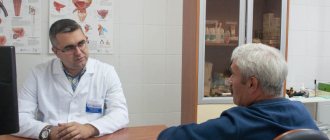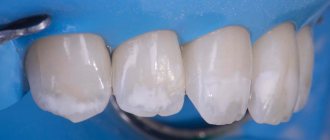Intestinal infections are a whole set of diseases that arise as a result of the spread of harmful bacteria. Despite the similar symptoms and methods of infection, which are identical, each disease has its own distinctive features, for example, the period from the moment of infection to the appearance of the first signs, danger to humans. In this case, every person should know how to cure an intestinal infection and how to recognize it at an early stage.
What are intestinal infections and where do they live?
Intestinal infections are infections of the body by bacteria, viruses or parasites through the gastrointestinal tract. Normally, many different types of bacteria live in our intestines. But if food, antibiotics or infection cause dysbiosis, unpleasant symptoms begin.
Symptom or cause? What is dysbiosis and what to do about it?
Most pathogenic bacteria enter the body with water or food. For example, you swam in dirty water and accidentally swallowed some, ate undercooked meat, a raw egg or expired kefir.
Intestinal infections are also called “dirty hand disease” because you can become infected through contact. An underestimated source of infection is patients without clinical manifestations of the disease.
A person remains infectious throughout the entire disease cycle: from the incubation period to complete recovery. And it can take up to several weeks. The infection enters the environment through feces and vomit, and viruses are transmitted by airborne droplets.
In the summer, the risk of infection is higher.
People interact with each other more often and more closely, the shelf life of products is shortened, and in warm conditions bacteria multiply faster. It is important to pay attention to children, who often accidentally swallow contaminated seawater and taste everything they see.
Bacterial pathogens of intestinal infections: Shigella, Salmonella, Vibrio cholerae, Staphylococcus, Escherichia, Brucella, Clostridia. Viral pathogens of intestinal infections: rotavirus, enterovirus, adenovirus. Bacterial intestinal infections associated with infection with staphylococcus and salmonellosis are more often diagnosed.
Acute intestinal infection
Intestinal infections are one of the most common diseases in the world. Their prevalence among the population is extremely high, both in the children's age group and in adults. When we talk about intestinal infection, we mean acute intestinal disease.
Acute intestinal infections (AI) are a group of acute human infectious diseases caused by various infectious agents (mainly bacteria), with a nutritional mechanism of infection, manifested by fever and intestinal syndrome with the possible development of dehydration and severe course in children and the elderly.
The incidence of intestinal infections in the world, and in particular in Russia, is quite high. Every year more than 500 million people get sick on the planet. The incidence rate in Russia reaches 400 or more cases per 100 thousand population. The structure of childhood morbidity and mortality suggests that acute intestinal diseases are in third place.
Causes of intestinal infections
The digestive tract consists of the oral cavity, pharynx, esophagus, stomach, small intestine (including the duodenum, jejunum, ileum), and large intestine. In the saliva of the oral cavity there is a substance - lysozyme, which has a bacteriostatic effect. This is the first protective barrier. The mucous membrane of the stomach has glands that produce gastric juice (consisting of hydrochloric acid and pepsin). Hydrochloric acid is the second barrier for pathogenic microorganisms that can die in it (however, this does not always happen). The mucous membrane of the small intestine is covered with numerous villi that participate in parietal digestion and perform protective and transport functions. Microflora inhabiting the intestines - bifidobacteria, lactobacilli, E. coli, bacteroides, fusobacteria, peptococci. Obligate flora makes up 95-98% of all representatives. Another group of microorganisms inhabiting the intestines, which includes staphylococci, fungi, opportunistic microorganisms (Klebsiella, streptococci, Proteus, Pseudomonas aeruginosa, clostridia and others). All other flora that enters from the outside is called pathogenic and causes an acute intestinal infection.
Causes of intestinal infections
The source of infection is a patient with a clinically pronounced or erased form of intestinal infection, as well as a carrier. The contagious period is from the moment the first symptoms of the disease appear and the entire period of symptoms, and for a viral infection - up to 2 weeks after recovery. Patients release pathogens into the environment with feces, vomit, and less often with urine.
The mechanism of infection is nutritional (that is, through the mouth). The routes of infection are fecal-oral (food or water), household, and for some viral infections - airborne. Most pathogens of acute intestinal infection are highly resistant in the external environment and retain their pathogenic properties well in the cold (in the refrigerator, for example). Transmission factors are food products (water, milk, eggs, cakes, meat, depending on the type of intestinal infection), household items (dishes, towels, dirty hands, toys, door handles), swimming in open water. The main role in the spread of infection is given to compliance or non-compliance with personal hygiene standards (washing hands after using the toilet, caring for the sick, before eating, disinfecting household items, allocating personal utensils and towels to the sick person, reducing contact to a minimum). Susceptibility to intestinal infections is universal, regardless of age and gender. The most susceptible to intestinal pathogens are children and the elderly, people with diseases of the stomach and intestines, and people suffering from alcoholism.
General symptoms of acute intestinal infections
The incubation period (from the moment the pathogen enters until the first signs of the disease appear) lasts from 6 hours to 2 days, rarely longer. Almost any intestinal infection is characterized by the development of 2 main syndromes, but to varying degrees of severity:
- Infectious-toxic syndrome (ITS), which is manifested by a temperature ranging from subfebrile numbers (37º and above) to febrile fever (38º and above). In some infections there is no temperature at all (for example, cholera), and the absence of temperature or a slight short-term rise is typical for food poisoning (staphylococcal, for example). Fever may be accompanied by symptoms of intoxication (weakness, dizziness, body aches, nausea, and sometimes vomiting due to high fever). Often, an infectious-toxic syndrome is the beginning of an acute intestinal infection, lasting until the appearance of the second syndrome from several hours to a day, rarely longer.
- Intestinal syndrome. Manifestations of intestinal syndrome may be different, but there are similarities in symptoms. This syndrome can manifest itself as a syndrome of gastritis, gastroenteritis, enteritis, gastroenterocolitis, enterocolitis, colitis.
Gastritis syndrome is characterized by the appearance of pain in the stomach (epigastric region), constant nausea, vomiting after eating and drinking water, and even a sip of liquid can cause it. Vomiting can be repeated, bringing short-term relief. It is possible to liquefy the stool over a short period of time, sometimes once.
Gastroenteritis syndrome is accompanied by abdominal pain in the stomach and umbilical region, vomiting, and the appearance of frequent stools, first mushy in nature, and then with a watery component. Depending on the cause of the occurrence, the color of the stool may change (greenish with salmonellosis, light brown with escherichiosis, for example), as well as mucus and undigested food debris may appear.
Enteritis syndrome is characterized by the appearance of only stool disorders in the form of frequent watery stools. The frequency depends on the type of pathogen and the degree of its infectious dose reaching a particular patient.
Gastroenterocolitis syndrome is manifested by vomiting and frequent loose stools, abdominal pain becomes widespread and almost constant, bowel movements become painful and do not bring relief, and there is often blood and mucus in the stool. Some acts of defecation with scanty mucous discharge.
Enterocolitis syndrome is characterized only by severe pain along the entire perimeter of the abdomen, frequent stool mixed with scanty discharge.
Colitis syndrome is manifested by pain in the lower abdomen, mainly on the left, bowel movements are painful, the contents are scanty with an admixture of mucus and blood, a false urge to stool, and no relief at the end of defecation.
Syndromes such as gastroenteritis, gastroenterocolitis and enterocolitis are characteristic of salmonellosis, enterocolitis and colitis are characteristic of dysentery, escherichiosis is accompanied by the development of gastroenteritis, enteritis is the leading syndrome of cholera, gastritis syndrome can accompany food poisoning, but it can also be gastroenteritis, viral intestinal infections occur more often in form of gastroenteritis.
Complications of acute intestinal infections
- Dehydration (dehydration) is a pathological loss of water and salts in an unnatural way (vomiting, loose stools). There are 4 degrees of dehydration in adults: - 1 degree (compensated) - loss of body weight up to 3% of the original; 2nd degree (transitional) – loss of body weight 4-6% of the original; 3rd degree (subcompensated) – 7-9% of the original; 4th degree (decompensated) – more than 10% loss of body weight from the initial one. In children, grade 3: 1 degree (weight loss up to 5% of the original), 2 degree (6-9%), 3 degree (algid) - more than 10% loss of body weight from the original. In addition to weight loss, concerns about dry skin and mucous membranes, thirst, decreased skin elasticity, and hemodynamic disturbances (increased heart rate, decreased blood pressure). Thirst does not always happen: if there is a salt-deficient type of dehydration (this happens more often with repeated vomiting), then there may not be thirst. If the water deficiency type of dehydration is present, then thirst is the main symptom.
- One of the manifestations of fulminant dehydration: dehydration shock with a possible fatal outcome. There is severe dehydration and hemodynamic disorders (critical drop in blood pressure).
- Infectious-toxic shock: occurs against a background of high temperature, often at the onset of the disease and is accompanied by high toxinemia (high concentration of bacterial toxins in the blood), serious hemodynamic disturbances and possible death.
- Pneumonia (pneumonia).
- Acute renal failure.
It is no secret that the appearance of frequent loose stools for most people is not a reason to see a doctor. Most try to use various drugs and methods to stop diarrhea and restore impaired health. At the same time, a simple (as it seems at first glance) intestinal infection can turn into a serious problem with long-term disability.
Symptoms that require you to see a doctor immediately:
- early childhood (up to 3 years) and preschool age of the child;
- elderly people (over 65 years old);
- frequent loose stools more than 5 times a day in an adult;
- repeated vomiting;
- high fever with diarrhea and vomiting;
- blood in stool;
- cramping abdominal pain of any localization;
- severe weakness and thirst;
- the presence of chronic concomitant diseases.
What absolutely should not be done if you suspect an acute intestinal infection:
If frequent loose stools appear, accompanied by abdominal pain and fever, then:
- Painkillers should not be used. In the case of hidden symptoms of any surgical pathology (cholecystitis, appendicitis, intestinal obstruction and others), pain relief can complicate the diagnosis and delay the provision of timely specialized care.
- You cannot independently use fixing agents (astringents) - such as immodium or loperamide, lopedium and others. In acute intestinal infection, the bulk of pathogen toxins are concentrated in the intestines, and the use of such drugs contributes to their accumulation, which will aggravate the patient’s condition. The course of intestinal infection will be favorable with timely emptying of intestinal contents along with pathogen toxins.
- You cannot do enemas yourself, especially with hot water.
- You cannot use heating procedures on the abdomen (a heating pad with hot water, for example), which certainly increases the inflammatory process, which will aggravate the patient’s condition.
- If you have symptoms of an acute intestinal infection and suspect a surgical pathology, you should not hesitate and try to treat with improvised means (folk, homeopathic and others). The consequences of delaying seeking medical help can be very serious.
Laboratory diagnosis of acute intestinal infection
A preliminary diagnosis is made after a clinical and epidemiological examination, which includes contact with the patient, possible cases of intestinal infection among the immediate environment, consumption of poor quality products, products without water treatment and heat treatment, failure to comply with personal hygiene rules, as well as symptoms of the disease ( the onset of the disease, the main symptoms characteristic of a particular infection).
Already at this stage, an unmistakable diagnosis is possible (for example, in the case of the outbreak nature of the disease and the presence of similar patients in the infectious diseases clinic, in the presence of specific symptoms - blood in the stool, false urge to stool, temperature during dysentery, for example; copious watery stools without odor or impurities , without fever - with cholera), due to which in some cases, after collecting all materials for laboratory testing, specific treatment is prescribed already at the stage of preliminary diagnosis. An experienced doctor, in the presence of obvious symptoms, may suspect a certain intestinal infection and prescribe adequate treatment.
The final diagnosis is made after laboratory confirmation:
- Bacteriological methods (seeding materials for research on special media and growing bacterial colonies). Materials can be feces, vomit, gastric lavage, food debris, water samples. Preliminary sowing and the result can be issued on the 2nd-3rd day.
- Serological methods (detection of specific antibodies in the blood) ELISA, RNGA - paired blood sera are necessarily taken with an interval of 10-14 days.
- PCR diagnostics in biological fluids (for example, L-form salmonella). The result is issued on the same day.
Instrumental diagnostic methods: sigmoidoscopy, colonoscopy, irigoscopy.
Prognosis of acute intestinal infection
The outcomes can be both favorable (recovery) and unfavorable (formation of chronic forms, carriage). In the children's age group, in 25% of cases, the outcome of intestinal infection can be the formation of gastrointestinal tract pathology in the form of pancreatic dysfunction, biliary tract disorders, intestinal dysbiosis, and functional dyspepsia.
Prevention of acute intestinal infection comes down to the following measures:
- compliance with personal hygiene rules;
- drinking boiled or bottled water;
- washing vegetables and fruits before consumption with running water, and for small children - with boiled water;
- thorough heat treatment of necessary food before consumption;
- short-term storage of perishable foods in the refrigerator;
- do not accumulate garbage;
- monitor the cleanliness of the home and sanitary maintenance of the toilet room and bathroom.
How to identify the symptoms of an intestinal infection?
It is worth remembering that on average the incubation period of an intestinal infection ranges from 4 hours to 48 hours, in some cases it reaches 2 weeks or more.
Symptoms:
- Heat
- Repeated vomiting
- Severe abdominal pain that is not relieved by vomiting
- Prolonged loose stools (in some cases with mucus or blood)
- When infected with viruses, symptoms similar to influenza may also be observed: fever, headache, aching limbs, runny nose. There is even such a disease - intestinal flu.
All these symptoms can be considered food poisoning. But here's what to pay attention to so as not to confuse an intestinal infection with something else:
How to avoid food poisoning?
- symptoms last longer than 2-3 days;
- vomiting and diarrhea do not stop, and abdominal pain does not improve after vomiting;
- there is an admixture of mucus or blood in the stool, the color of urine or feces has changed significantly;
- you lose consciousness or have concomitant chronic diseases.
In this case, we strongly recommend that you consult a doctor. The consequences of infections are much more serious than the consequences of poisoning.
Important: do not take antibiotics without a doctor's recommendation. Especially if you have a viral infection. With a virus, they are ineffective and can cause harm by destroying the intestinal microflora.
Treatment options
As soon as the first symptoms of the disease appear, you should eat as little food as possible and drink plenty of fluids to prevent dehydration. It is better to drink regular non-carbonated mineral water, compotes, and unsweetened tea. The liquid should not be cold or very hot.
Rehydration products
Helps with frequent vomiting and diarrhea. It is worth giving preference to pharmaceutical drugs.
Enterofuril has proven itself well, capable of fighting any intestinal infections.
Antibiotics
Prescribed to treat many bacterial infections. They can only be used for medical purposes. This or that drug is able to fight a specific type of bacteria. It is important to correctly identify the causative agent of infection. Proper use of antibiotics will allow you to experience a noticeable improvement within a day after starting treatment. They should be taken throughout the entire treatment course, the duration of which is determined by the doctor.
If treatment is interrupted, the remaining microorganisms will become resistant to antibiotics and become insensitive to their action. As a result, over time the disease will manifest itself with even greater force and it will be more difficult to overcome it. Effective agents include: Levomycetin, Ampicillin, Rifaximin.
Antiprotozoal agents
Effective against protozoal infectious lesions. Like antibiotics, they can only be prescribed by a doctor; you should never self-medicate, otherwise there is a risk of worsening the condition. First you need to do an examination. The results of the analysis will allow you to establish an accurate diagnosis and select appropriate medications. Usually prescribed: Ornidazole, Clarithromycin, Spiramycin.
How to treat and not pass on an intestinal infection to others?
Treatment depends on the pathogen and severity of the disease. For example, dysentery or norovirus can be treated at home. But only a specialist can help with salmonellosis. In any case, to make a decision on treatment, you must call a doctor and undergo laboratory tests.
Here's what you can do to get started:
- Restore water-salt balance. It is better to drink boiled or bottled water with the addition of special solutions for rehydration
- Take enterosorbents to relieve intoxication of the body, as well as painkillers and antipyretics
- Eliminate fried, salty, spicy, raw foods from your diet
- If you want to eat, it is better to give preference to simple food: soup, rice, bread
- Rest more
How to avoid infecting others if you or your loved ones are sick?
- Wash your hands thoroughly
- Regularly disinfect common areas and the patient's room: especially the toilet, bathroom, kitchen
- Provide separate dishes and towels for the sick person
- Change bedding and clothing regularly and wash them at high temperature (60°C)
- Limit your social circle, isolate the sick person
It is recommended to visit public places no earlier than two days after the symptoms have completely disappeared, and places such as a swimming pool are better after two weeks.
Symptoms of salmonellosis:
The incubation period lasts from several hours to 2 days. The body temperature rises sharply, severe pain, heaviness in the head, and weakness appear. Stool upset due to salmonellosis is one of the main symptoms. The stool becomes watery, foamy and extremely foul-smelling. Defecation is accompanied by the urge to vomit. The mucous membrane of the mouth and tongue become covered with a white coating and become excessively dry.
Patients suffering from severe salmonellosis or complications must be hospitalized. Adults and children experiencing mild infection are treated at home. Treatment of salmonellosis begins with a basic gastric and intestinal lavage procedure.
Then restore the balance of electrolytes in the patient’s body and correct the water-salt balance. This is done by consuming a saline solution orally. For severe dehydration, intravenous infusion therapy is performed, which includes polyionic solutions.
How to avoid getting infected with rotavirus, intestinal flu and other infections?
There are a few simple rules:
- Wash your hands thoroughly with soap after visiting public places, toilets, and transport.
- Consume only thermally processed foods: especially meat, fish and eggs. Be careful with dairy and lactic acid products
- Wash vegetables and fruits
- Avoid expired products
- Drink only bottled or boiled water (especially on vacation), do not swallow water when swimming in open water.
All intestinal infections have a high degree of contagiousness, or infectiousness - the ability to be transmitted from organism to organism. Risk groups include young children and the elderly, patients with immunodeficiency, and employees of medical institutions and catering establishments.
You can get a stomach infection again because you don't develop immunity to it. However, a strong and rich intestinal microbiota will help prevent infection and ease the course of the disease. The more diverse the composition of the microbiota, the stronger the immune system and the body's immune response. This is why it is so important to take care of beneficial bacteria and maintain their balance in the intestines.
You can find out how diverse your microbiota is with the Atlas Microbiota Test.
Staphylococcus
The disease is caused by opportunistic microbes that are dangerous to human health. Living in the body constantly, they are under the control of the immune system. But when the protection is weakened, they can provoke an inflammatory process.
Staphylococcus is a non-motile, spherical gram-positive microorganism that forms numerous colonies. It can develop and parasitize in the body without oxygen in a closed environment. There are more than twenty strains of bacteria. Some of them are quite harmless, while others cause powerful pathological reactions in the human body.
Pathology most often appears on the skin, mucous membranes, connective tissue, subcutaneous tissue, and cardiac muscle. By infecting them, microbes produce toxic substances and provoke inflammation, which in severe cases leads to sepsis and irreversible changes in structures.
The most common variety is Staphylococcus aureus. It got its name because of the characteristic yellow pigment on the surface. Penetrating into the body, it synthesizes the enzyme coagulase and can cause purulent inflammation of almost any internal organs.









